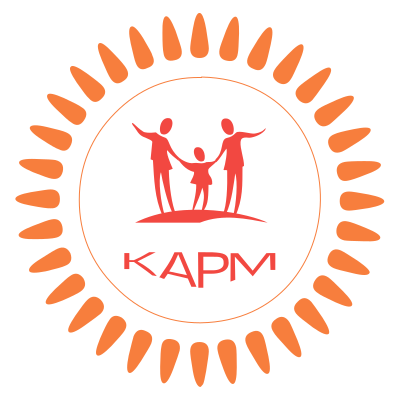Congenital malformations in children conceived by assisted reproductive technologies in Kazakhstan: A prospective cohort study
DOI:
https://doi.org/10.37800/RM.4.2023.76-85Keywords:
infertility, assisted reproductive technologies (ART), in vitro fertilization (IVF), offspring health, congenital malformations, congenital cardiovascular malformationsAbstract
Relevance: The growing popularity of assisted reproductive technologies (ART) has necessitated research in the field of health and development of children conceived using these technologies. One important aspect of such research is the study of the frequency of congenital malformations in ART children.
The study aimed to assess the risks of increasing congenital malformations in children conceived by ART.
Materials and Methods: A prospective cohort study was conducted as part of the Scientific Project ИРН AP14872103, «Somatic and psychosocial status of children after ART determination with the development of prediction model and principles of child management.» The study included 252 children under 5 years, of whom 120 were conceived through ART. Both groups had their medical history collected, and the children were examined and consulted with a pediatrician. We used adjusted odds ratios (OR) to compare the results with the control group and analyze maternal risk factors.
Results: The frequency of congenital malformations was statistically significantly lower in the study group (p=0.026). The odds of giving birth to children with congenital malformations using ART were 2.7 times lower than naturally conceived (NC) children (95% CI: 0.15-0.91). Interestingly, the odds of giving birth to children with cardiovascular abnormalities were 2.06 times higher when using ART compared to NC (95% CI: 0.98-4.29). However, these findings were not statistically significant (p=0.052). Analysis of risk factors for congenital heart disease in ART offspring revealed that factors such as multiple pregnancies, cholelithiasis, ectopic pregnancies, and a history of using ART increased the risks of congenital cardiac anomalies. In contrast, the use of intracytoplasmic sperm injection (ICSI) and progesterone supplementation during pregnancy reduced this risk.
Conclusion: Considering that more than 10 million children have already been born worldwide through ART, the possibility of reducing the risks of congenital malformations through modern technologies is promising. Furthermore, the cohort study of children in Kazakhstan will help increase the sample size and extend the applicability of the findings to other ethnic groups, thereby contributing to the analysis of data at a global level.
References
Opdahl S, Henningsen AA, Bergh C, Gissler M, Romundstad LB, Petzold M, Tiitinen A, Wennerholm UB, Pinborg AB. Data Resource Profile: Committee of Nordic Assisted Reproductive Technology and Safety (CoNARTaS) cohort. Int J Epidemiol. 2020;2(49):365-366F.
https://doi.org/10.1093/ije/dyz228
European Society of Human Reproduction and Embryology (ESHRE). ART fact sheet [Internet]. 2023 Nov; cited 2023 Nov 27. Available from:
www.eshre.eu/Europe/Factsheets-and-infographics. 27.11.2023.
Wyns C, Bergh C, Calhaz-Jorge C, De Geyter C, Kupka MS, Motrenko T, Rugescu I, Smeenk J, Tandler-Schneider A, Vidakovic S, Goossens V. ART in Europe, 2016: results generated from European registries by ESHRE. Hum Reprod Open. 2020;3:1-17.
https://doi.org/10.1093/hropen/hoaa032
Henningsen AA, Bergh C, Skjaerven R, Tiitinen A, Wennerholm UB, Romundstad LB, Gissler M, Opdahl S, Nyboe Andersen A, Lidegaard O, Forman JL, Pinborg A. Trends over time in congenital malformations in live-born children conceived after assisted reproductive technology. Acta Obstet Gynecol Scand. 2018;7(97):816-823.
https://doi.org/10.1111/aogs.13347
Zhao J, Yan Y, Huang X, Li Y. Do children born after assisted reproductive technology have an increased risk of birth defects? A systematic review and meta-analysis. J Matern Fetal Neonatal Med. 2020;2(33):322-333.
https://doi.org/10.1080/14767058.2018.1488168
Fauque P, De Mouzon J, Devaux A, Epelboin S, Gervoise-Boyer MJ, Levy R, Valentin M, Viot G, Bergère M, De Vienne C, Jonveaux P, Pessione F. Do in vitro fertilization, intrauterine insemination or female infertility impact the risk of congenital anomalies in singletons? A longitudinal national French study. Hum Reprod. 2021;3(36):808-816.
https://doi.org/10.1093/humrep/deaa323
Luke B, Brown MB, Wantman E, Forestieri NE, Browne ML, Fisher SC, Yazdy MM, Ethen MK, Canfield MA, Watkins S, Nichols HB, Farland LV, Oehninger S, Doody KJ, Eisenberg ML, Baker VL. The risk of birth defects with conception by ART. Hum Reprod. 2021;1(36):116-129.
https://doi.org/10.1093/humrep/deaa272
Berlac JF, Hartwell D, Skovlund CW, Langhoff-Roos J, Lidegaard O. Endometriosis increases the risk of obstetrical and neonatal complications. Acta Obstet Gynecol Scand. 2017;6(96):751-760.
https://doi.org/10.1111/aogs.13111
Liang Z, Yin M, Ma M, Wang Y, Kuang Y. Effect of Maternal Advanced Endometriosis on Risk of Congenital Malformations for Infants Born After in vitro Fertilization and Frozen-Thawed Embryo Transfer: Analysis of 28,600 Newborns. Front Endocrinol (Lausanne). 2019;10:1-7.
https://doi.org/10.3389/fendo.2019.00763
Mills G, Badeghiesh A, Suarthana E, Baghlaf H, Dahan MH. Associations between polycystic ovary syndrome and adverse obstetrical and neonatal outcomes: a population study of 9.1 million births. Fertil Steril. 2020;3(114):e3.
Downloads
Published
How to Cite
Issue
Section
License
Copyright (c) 2023 The rights to a manuscript accepted for publication are transferred to the Journal Publisher. When reprinting all or part of the material, the author must refer to the primary publication in this journal.

This work is licensed under a Creative Commons Attribution-NonCommercial-NoDerivatives 4.0 International License.
The articles published in this Journal are licensed under the CC BY-NC-ND 4.0 (Creative Commons Attribution – Non-Commercial – No Derivatives 4.0 International) license, which provides for their non-commercial use only. Under this license, users have the right to copy and distribute the material in copyright but are not permitted to modify or use it for commercial purposes. Full details on the licensing are available at https://creativecommons.org/licenses/by-nc-nd/4.0/.





